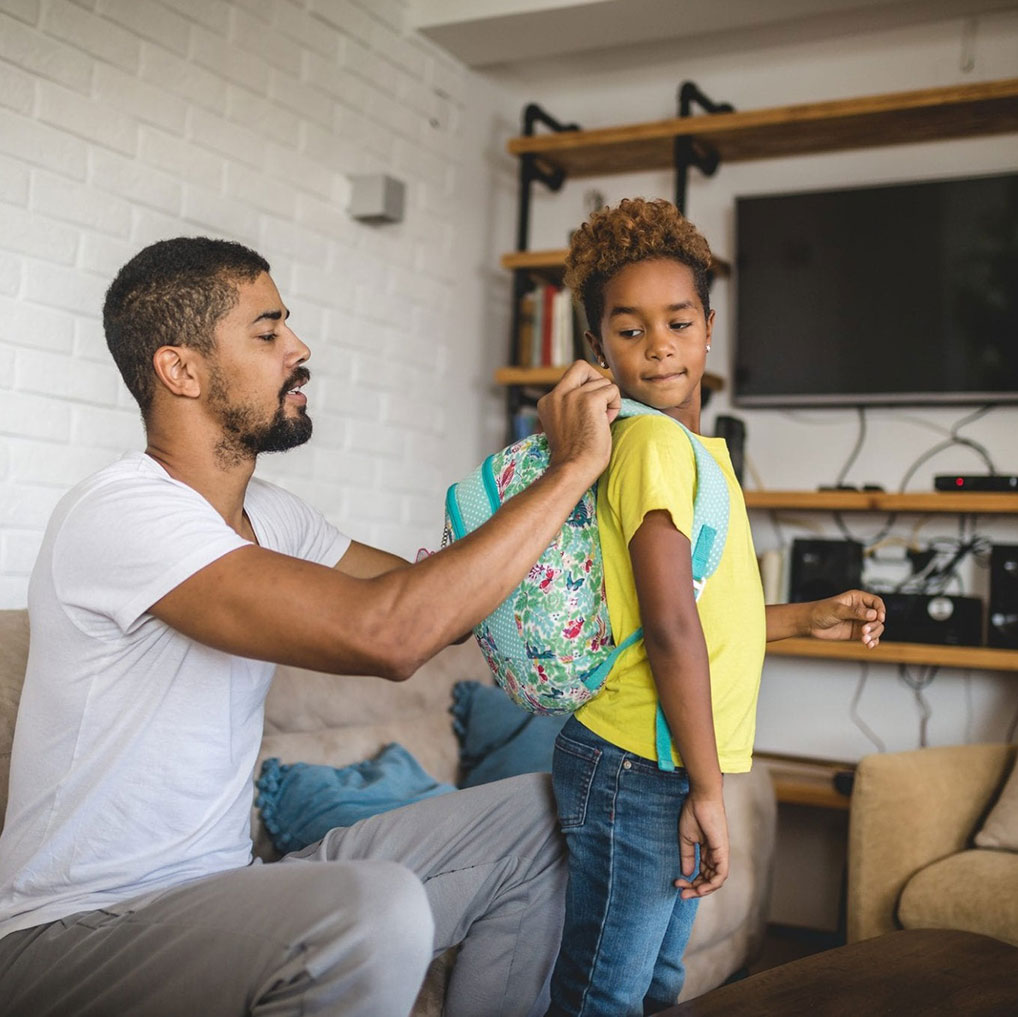Things You Did Not Know About Kids and Arthritis

November 30, 2021
By Brianna McCabe
When the word “arthritis” is mentioned, most people tend to associate the condition with the elderly. However, this fails to include the nearly 300,000 children in the nation with some form of the disease.
According to Ginger Janow, M.D., a pediatric rheumatologist, arthritis is a term used to encompass over 100 types of joint pain and diseases — and will chronically develop in approximately 1 in every 1,000 children.
As one of the leading causes of disability in the United States, Dr. Janow answers some commonly asked questions about juvenile arthritis:
What are the main forms of arthritis?
There are three common types: infectious arthritis, osteoarthritis and autoimmune arthritis:Infectious arthritis occurs when bacteria or a virus enters the joint and multiplies, causing painful symptoms in and around the joints.
Osteoarthritis is the breakdown of joints after years of wear-and-tear and typically develops in elderly patients.
Autoimmune arthritis is the process of the immune system becoming confused and attacking the “self,” or in this case, the lining of the joint space. Juvenile arthritis is a form of autoimmune arthritis.
What are some common symptoms?
For people of all ages, arthritis is usually marked by symptoms of swelling, joint pain, decreased mobility and morning stiffness.
What is morning stiffness?
It is actually one of the most telling findings of arthritis. When I describe this phenomenon with parents of children with arthritis, I use a metaphor of comparing inflammation in the joint to Jell-O. If you have ever made Jell-O, you know that you start out with a liquid that, after refrigeration, transforms into a solid. When you have inflammation, your joints develop this “inflammatory goo,” similar to Jell-O, that sets and becomes more solid when you go to sleep or sit still for a while. When you wake up or try to move, there is a sensation of stiffness that resolves as you move around and break up the more solid substance into liquid.
As a parent, how do you tell if your child is just ‘exaggerating’ some of his or her pain versus genuinely understanding if your child has an underlying health issue awaiting a proper diagnosis and treatment?
As a parent, I know it is definitely a difficult task. You have to try to not focus on each tiny symptom. Instead, if a child is complaining about something specific (such as one joint on one side of the body), something daily, something that worsens at certain times of the day or something that impairs function, then it is definitely worth scheduling a visit with a pediatrician. A persistent limp, swelling and, say, the inability to hold a toothbrush due to finger pain are all examples of warning symptoms. Kids are not supposed to lose the ability to do things—they are meant to grow and develop. When that stops or they lose skills that they once had, that is a red flag.
What causes juvenile arthritis?
There is no known cause of arthritis; however, research has shown that there are both genetic and environmental components that contribute to a child developing juvenile arthritis. When we think about the genetic contribution to the development of juvenile idiopathic arthritis (JIA), the most common type of arthritis in children, it is helpful to look at sibling studies. In identical twins, who have the same exact genes, there is a 44% chance that the both siblings will have it if one does. In siblings who share the same parents but are not identical twins, there is a 4% chance that both siblings will have it if one is diagnosed. On the other hand, the prevalence in the general population is about 0.01%. So, clearly there are genetic factors and this has been confirmed by recent studies; the fact that identical twins do not have 100% concordance means that genes alone do not tell the whole story—there are other factors that we are trying to figure out.
At what age can a child develop arthritis?
I have diagnosed 1-year-old children with juvenile arthritis, though it is less common in children under 2-years-old. It is important to note, however, that arthritis does not discriminate based on age.
How do you diagnose a child with this disease?
The diagnosis is based on a physical exam. Exam findings, such as movement limitation or swelling, can be clues. Findings, though, are often subtle. It is not unusual that a child will come in for a swollen knee and we will find other involved joints that a parent did not notice. About 20% of children do not complain of pain in the affected joint. Imaging studies, like x-rays and ultrasounds, can be helpful complementary studies in some cases. Blood tests are not diagnostic of arthritis—while they can give information pertaining to prognosis, arthritis cannot be diagnosed nor ruled out based on labs alone. This is why diagnosis can sometimes be challenging.
Because it is difficult to diagnose, do you find that many children are often underdiagnosed or misdiagnosed?
Because it is so rare, it is not something that all pediatricians think about or keep at the top of their minds, especially since kids are trauma-prone and tend to fall/injure themselves. So, if a parent or pediatrician sees a problem with a joint or a limb, many will initially assume some traumatic incident occurred. As a result, children are often underdiagnosed, misdiagnosed, or diagnosed later in the course.
What happens if juvenile arthritis goes undiagnosed?
The most important reason to treat arthritis is to avoid long-term complications, such as destruction of joints and long-term disability.
How is juvenile arthritis treated?
Since every person has different needs, care plans are individualized to best help each patient. Treatment often includes medication and physical therapy, and in rare cases diet can be a factor.
Can a child ‘outgrow’ the disease?
Not every child will achieve remission by adulthood. Because of this, pediatric rheumatologists can help children manage the disease as they transition from childhood to adulthood.
“It is a common misconception that kids do not get arthritis,” explains Dr. Janow. “A lot of the times when I tell people what I do for a living, their eyes get really wide and most exclaim, ‘Wait, kids get arthritis, too?’
The material provided through HealthU is intended to be used as general information only and should not replace the advice of your physician. Always consult your physician for individual care.


